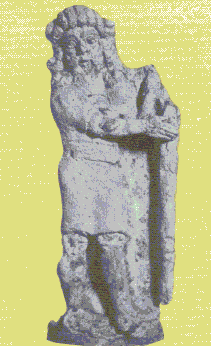Where Does History Begin?
Originally published in Creation 14, no 3 (June 1992): 44-45.
The early chapters of Genesis are factual history, and when compared with other writings the Bible has dramatically superior records of creation, the Fall, the Flood, and the Tower of Babel.
A short time ago I was reading a book that is perhaps the best available for a certain time period of ancient history. I was delighted until I found it contained a reference to the ‘myths’ of creation and the Flood. My delight turned to sadness.
The early chapters of Genesis are factual history, and when compared with other writings the Bible has dramatically superior records of creation, the Fall, the Flood, long-living men, the Table of Nations, and the Tower of Babel.
The Babylonian creation story has the god Marduk cutting the crocodile goddess Tiamat in two to create heaven and earth from her dismembered body. The Epic of Gilgamesh tells of the gods coming like a swarm of flies after the Flood when the Babylonian Noah—Utnapishtim—built an altar and offered a sacrifice to those poor, hungry deities who had not been fed while the terrifying flood-waters were rising.

Gilgamesh. The Epic of Gilgamesh borrowed many details from the true story of the Flood.
The Sumerian King List found at Kish talked about kings who lived between 10,000 and 64,000 years each. Interestingly, it has now been shown that these figures are probably mistranslated. When a system based on sixties replaces the decimal system translators had utilized, the total is remarkably close to the biblical total.
It has been asked, ‘Could they have been months, not years?’ The answer is clearly no—otherwise Genesis is talking about fathers at three and five years of age. The Kish list talks of these kings’ living ‘before the Flood’—and comes down to much shorter periods thereafter.
Something happened to cause shortening of life—and smaller sizes. It is widely accepted that many fossils point to greater size before that ‘something’, and we are not surprised to find a biblical comment—‘There were giants in the earth in those days’ (Genesis 6:4). There were giant men, and there were giant animals and reptiles.
New Conditions After The Flood
After the Flood, atmospheric and climatic conditions apparently changed, and the potential life-span of all created beings was dramatically reduced. Archaeologists such as Professor Samuel N. Kramer have pointed to the record outside the Bible of the dispersion that took place at the time of the building of the Tower of Babel. Eminent Professor William Foxwell Albright wrote about the astonishing accuracy of the ‘Table of Nations’ in Genesis chapter 10. The fragmentary ‘Epic of Atrahasis’—including both creation and the Flood—has caused some scholars to acknowledge that Genesis chapters 1 to 11 were written as literal history. That history starts at Genesis chapter 1—and the term ‘myth’ (even used in a philosophical sense) should not be applied to the Bible record.
Records Written Before Moses
Another interesting point is that those early Genesis records were in written form even before the time of Moses (he collated them). Way back in 1948 P.J. Wiseman had his book published, New Discoveries in Babylonia About Genesis. His son, Professor Donald J. Wiseman, retired Professor of Assyriology a London University, recently updated his father’s work in Clues to Creation in Genesis, supporting the basic theories of his late father.
The early records were written on clay tablets, divided by the literary device of a colophon at the end of each tablet—indicated by the words, ‘These are the generations of…’.
Carried In The Ark
Those tablets were carried across time as it were when Noah and his family were safe in the Ark. The records of all other peoples were destroyed—with only fragmentary and corrupted versions left to posterity. Only Genesis brings us with ringing clarity right back to Adam and Eve—not legendary figures, but our actual, historical first parents. As Jesus said, ‘Thy Word is Truth’ (John 17:17). That truth starts at Genesis chapter 1, verse 1.
Recommended Resources

Answers in Genesis is an apologetics ministry, dedicated to helping Christians defend their faith and proclaim the good news of Jesus Christ.
- Customer Service 800.778.3390
- © 2025 Answers in Genesis





